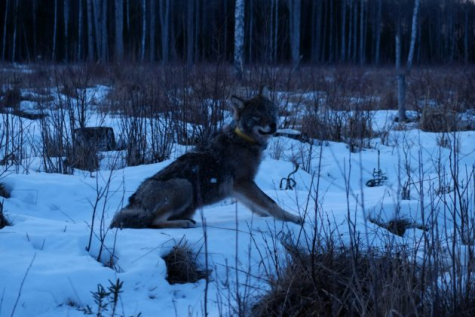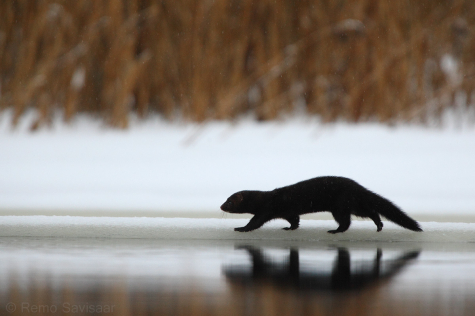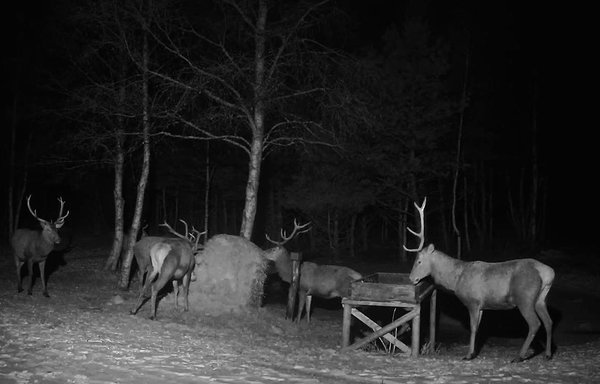February 24th – Anniversary of the Republic of Estonia
Our best wishes to Estonia!
Our best wishes to Estonia!

At dusk the young wolf was helped back to the forest by hunters of the Pärnumaa Hunters’ Association and wolf investigator Marko Kübarsepp.
Photos: Eero Nõmm and Marko Kübarsepp
Estonian text posted by the Animal of the Year Team 24.02.2019
English translation Liis

Moving along beaver paths you may also meet other semi-aquatic animals. Most frequently the American mink can be seen.
Posted by the Animal of the Year Team 23.02.2019
Compared to the beaver the mink is a quite small creature. A nature observer novice may even wonder whether they see an otter or a mink. The mink is small, body length stops at 30-47 cm, the otter is half as much longer than the mink – body length 60-90 centimetres. As always with semi-aquatic animals minks and otters move out of water too, splashing at the verge of the ice or along the bank of a water body. You will see their respective tails then and determine whom you have to do with from that. The tail of the mink is beautiful and fluffy! The otter has a rather stick-like tail.
Text and illustrations Tiit Hunt, www.rmk.ee
English translation Liis
Estonian text posted 21.02.2019
The antler-shedding period of the red deer is still ahead; from previous years we know that even a powerful old stag sheds its antlers in the last week but one in February at the earliest.

Images: Tiia and Ain Panek
English translation Liis
In East Virumaa there is enough snow
Roe deer Metskits or kaber Capreolus capreolus
How and why do wild animals find their way into a home garden?
We can only guess, and there may be quite a number of different reasons but probably that household has no dog, the entrance to the yard is not closed with a gate and the animal felt secure for almost a week.
Copyright 2025 · Looduskalender
Designed by Zymphonies
We also use analytics & advertising services. To opt-out click for more information.